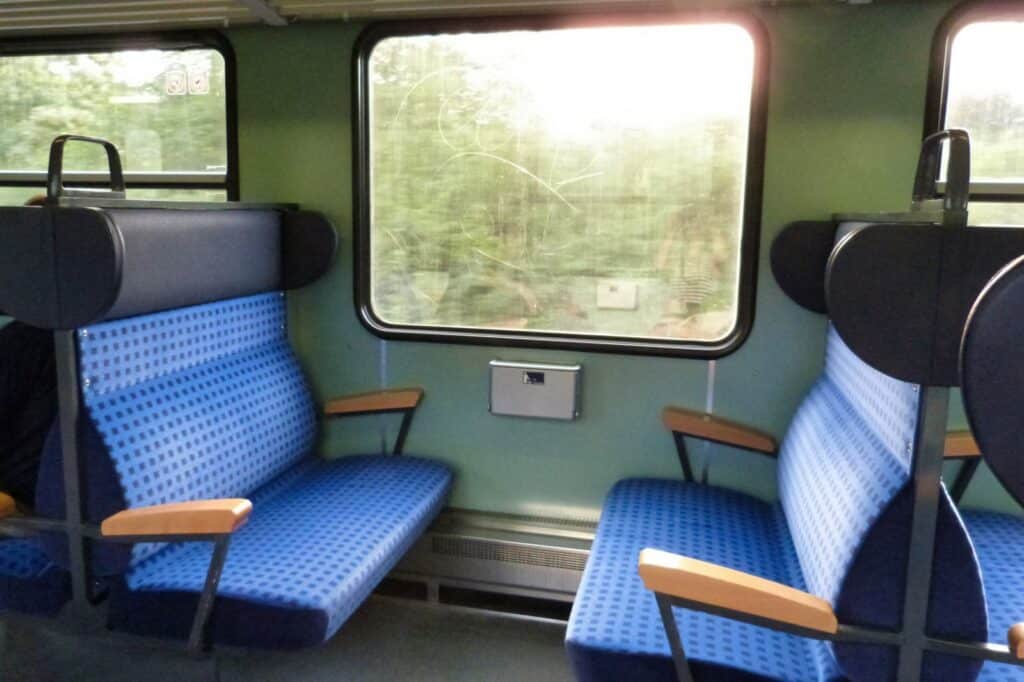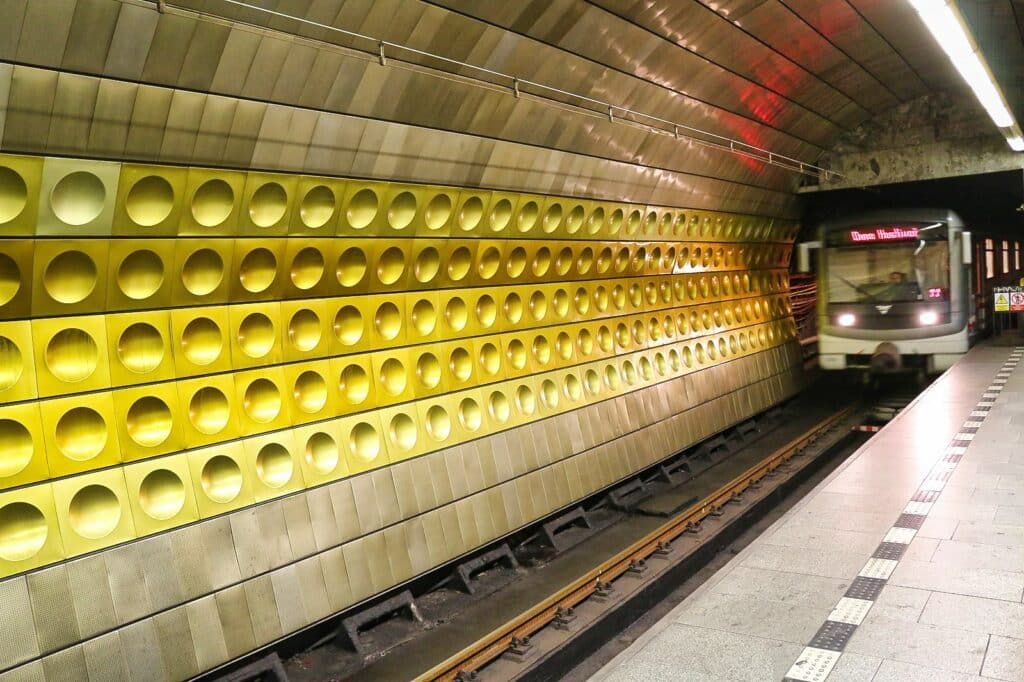Flights to Eastern Europe are often quite cheap. Airlines such as Wizzair or Ryanair usually fly to airports outside the major cities and can operate more cheaply. This means you can also see other exciting places and enjoy them for little money.
Transportation in Eastern Europe is also much cheaper than in Germany or Western Europe. One reason for this is that the transportation systems have not yet been renovated everywhere. On the other hand, comfort is not always as good as we are used to. Trains in Eastern Europe are also sometimes slower than in other places. But unlike Deutsche Bahn, the trains usually arrive on time and transport you for little money. So in the end you pay less and are just as fast.
Eastern Europe flights – Cheap and well connected
As is now the case everywhere, there are also low-cost airlines in Eastern Europe. Ryanair and Easyjet fly to almost all countries in Eastern Europe. There are now also low-cost airlines such as Wizzair from Hungary.
In addition to the low-cost airlines, the airlines in the countries of Eastern Europe are also sometimes quite cheap. These include Air Baltic for the Baltic States and Air Serbia for flights to and from Serbia.
In addition to the low-cost airlines, there are also some local airlines in Eastern Europe. You can book them through local travel agencies or they are listed on portals such as Skyscanner. Sometimes it is also worth enquiring with German travel agencies that have a local partner. The machines are often somewhat older.
But some of the airlines offer connections that are otherwise difficult to find and are sometimes much cheaper than regular airlines. However, if flight safety is important to you, I recommend you google the airline and see if there have been any complaints or if it is on the blacklist of the EU blacklist.
Long-distance buses in Eastern Europe
There are long-distance buses to Eastern Europe from all major German cities. Flixbus or Eurolines and other providers offer routes to the Baltic states(Lithuania, Latvia, Estonia), all major cities in Poland, Hungary, the Czech Republic and Slovakia. Many lines are also active in the Balkans. The following bus lines operate many routes to and in Eastern Europe and the Balkans:
- Flixbus
- Eurolines
- Ecolines
- Student Agency
- Take a look at comparison portals such as Omio for Europe-wide connections.
In Eastern Europe, buses are often a cheap and fast alternative to slow trains and expensive flights. When searching for regional bus companies, make sure that they also offer domestic trips. If not, then keep looking or check the Wikivoyage pages for alternatives.

Trains in Eastern Europe
My favorite form of travel in Eastern Europe is still the train. In some countries they are still slow and ancient, they rock and squeak, but for me they are the best way to get to know the country and its people. Trains are also often the cheapest way to travel. Cheap train tickets in Eastern Europe are usually best booked locally. With Deutsche Bahn or ÖBB you pay a surcharge. Many rail companies also offer online bookings in English.
Nevertheless, the travel information on the Deutsche Bahn website is a good place to look up all train connections to and within Eastern Europe, as they have a very good database. Google Maps also offers route planning that includes trains in many countries.
For daytime journeys, you should make sure that you get a compartment if possible. Ask at the ticket counter if there are any smoking compartments left. If you do not want this, make sure that it is a non-smoking compartment.
Occasionally it is worth making a trip to the on-board restaurant on Eastern European trains. Even though they have become quite expensive there, they are still considerably cheaper than in Germany. In the Czech Republic, for example, there is excellent food in the dining car that can compete even with restaurants. There is also sometimes very tasty and freshly tapped Pilsner Urquell from the barrel.
Night trains in Eastern Europe
I find the night trains in Eastern Europe the best way to travel. In Poland and the Ukraine you can save money on accommodation by reserving a bed on the train. There is usually a large compartment with beds and 4-seater compartments as well as 2-seater compartments. In Poland there are 6, 3 or 2-seater compartments. The fewer beds, the more expensive.
There is usually not too much space for luggage either. But you can usually fit in your backpack and hand luggage without any problems. Bedding is distributed on night trains. Normally you don’t need a sleeping bag. At night you are occasionally woken up by announcements, but the lights are off when you turn them off and the compartments can usually be locked.
Interrail in Eastern Europe
One way to discover Europe by train is with an Interrail ticket. The Interrail ticket is a ticket that allows travelers to travel by train in several European countries with just one ticket. It offers a flexible way to explore Europe, as it allows you to take as many train journeys as you like in the participating countries within a certain period of time. There are various types of Interrail Passes, which differ in their period of validity and the number of countries that can be traveled to.
Whether an Interrail ticket is the best solution depends largely on your travel style, the frequency of your train journeys and the countries you want to visit in Eastern Europe. If you value flexibility and plan to travel frequently, an Interrail Pass can still be a convenient and potentially cost-effective option. Especially in larger countries, where the rail network is now well-developed, modern and unfortunately also somewhat more expensive, Interrail is a good value option. In smaller countries such as Slovakia or inexpensive countries such as Bulgaria, the Interrail ticket is often not worthwhile.
If you are traveling on a budget, have a fixed itinerary and like to book individual sections in advance, buying tickets separately in Eastern Europe can be cheaper due to the lower cost of individual tickets. It’s always a good idea to carry out a comparative cost analysis based on your planned itinerary before making a decision.

Public transportation in Eastern Europe
Local transport in all post-communist states is usually a bit dilapidated but all the cheaper. However, especially in the large cities in the new EU countries, local transport is increasingly being modernized. Local transport is actually well organized everywhere in Eastern Europe. Depending on the country and city, the following means of transportation are usually available:
- Subway/metro – mostly in cities with more than one million inhabitants. Tickets must be purchased before accessing the platform.
- Streetcars are available almost everywhere in medium-sized cities with a population of 100,000 or more.
- Trolleybuses – are buses that are suspended from overhead lines and run on electricity. Otherwise they are like normal buses.
- Buses/buses – run often and usually on time. However, if in doubt, ask whether the direction is correct. Intercity buses depart from and arrive at central bus stations. Unlike in Germany, stopovers are usually not a problem. This means you can often get off at remote sights without having to make your own stop along the way.
- Minibuses/Marshrutki – are minibuses that are often privately operated but run on regular routes. They are usually faster but somewhat more expensive than normal buses. Payment is made either when boarding or after sitting down. If you sit further back, the money is usually passed through, just like the change.
- Cabs – are actually always cheap. Uber is available in many cities. However, there are also other good alternatives such as Bolt or local providers that also have their own app. It’s worth asking locals which cab apps they use.
Eastern Europe Flights, trains and buses – nothing stands in the way of your journey
Eastern Europe offers a wide range of affordable travel options, making it an attractive destination for budget travelers. Eastern Europe Flights with low-cost airlines such as Wizzair, Ryanair and EasyJet, as well as local airlines, allow travelers to explore different parts of this region at affordable prices. Despite the lower costs, the flight connections in Eastern Europe are reliable and well connected.
In addition to flights to Eastern Europe, other means of transportation such as long-distance buses, local bus lines and trains are an inexpensive alternative for travelling around the region. Night trains offer a unique and cost-effective way to discover Eastern Europe while saving on accommodation costs.
Public transport is well organized and offers a variety of options in the cities, from subway trains to trolley buses. Eastern Europe is an ideal destination for those who want to experience culture, history and nature without straining their budget.



